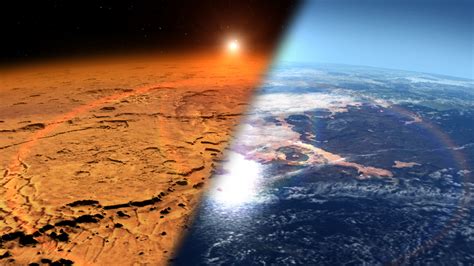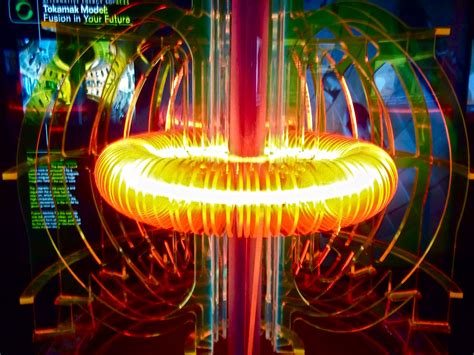
Scientists have confirmed “sputtering,” the stripping away of atmospheric particles by solar wind, as a major culprit in the ongoing thinning of Mars’ atmosphere, providing definitive evidence for a long-suspected process that has dramatically altered the planet’s climate over billions of years.
New data from NASA’s MAVEN (Mars Atmosphere and Volatile Evolution) mission provides compelling evidence that the solar wind is actively eroding Mars’ atmosphere, confirming the “sputtering” process where ions from the solar wind bombard the Martian atmosphere, kicking out atmospheric gases into space. This process, acting over eons, is believed to have played a significant role in transforming Mars from a warm, wet world to the cold, arid desert we observe today. The findings, based on years of observations, solidify the understanding of atmospheric escape mechanisms on Mars and offer insights into the evolution of other planetary atmospheres, including Earth’s.
Evidence of Atmospheric Sputtering Confirmed
For years, scientists have theorized that sputtering contributes significantly to the atmospheric loss on Mars. However, direct and comprehensive evidence has been elusive until now. The MAVEN mission, launched in 2013, was specifically designed to investigate the upper atmosphere of Mars and its interaction with the solar wind. By analyzing the composition and behavior of atmospheric gases, along with the characteristics of the solar wind, researchers have been able to quantify the rate at which sputtering occurs and its impact on the Martian atmosphere.
“Sputtering is a process where the solar wind, a stream of charged particles continuously emitted by the Sun, interacts with the outermost layer of a planet’s atmosphere,” explained Dr. Shannon Curry, a planetary scientist at the University of California, Berkeley, and principal investigator of the MAVEN mission. “When these charged particles collide with atmospheric molecules, they can transfer enough energy to knock those molecules away from the planet’s gravity, causing them to escape into space.”
MAVEN’s observations have revealed that sputtering is particularly effective at removing lighter elements, such as hydrogen and oxygen, from the Martian atmosphere. These are the very elements that make up water, suggesting that sputtering has contributed to the drying out of Mars over time. The current rate of atmospheric loss due to sputtering is relatively slow, but scientists believe that it was much higher in the past when the Sun was more active and emitted a stronger solar wind.
The Role of Solar Wind
The solar wind consists primarily of protons and electrons, but it also contains heavier ions, such as helium and oxygen. These ions are accelerated to high speeds by the Sun’s magnetic field and can carry a significant amount of energy. When these ions encounter the Martian atmosphere, they collide with atmospheric molecules, transferring some of their energy. If the energy transfer is sufficient, the atmospheric molecules can be ejected from the planet.
The effectiveness of sputtering depends on several factors, including the density of the solar wind, the composition of the Martian atmosphere, and the magnetic field environment around Mars. Mars lacks a global magnetic field like Earth’s, which makes its atmosphere more vulnerable to the effects of the solar wind. Without a global magnetic field to deflect the charged particles, the solar wind can directly interact with the Martian atmosphere, leading to increased sputtering rates.
MAVEN’s data has shown that sputtering is most pronounced during periods of intense solar activity, such as solar flares and coronal mass ejections. These events can significantly increase the density and speed of the solar wind, leading to a surge in sputtering rates. During these periods, the rate of atmospheric loss can increase by several orders of magnitude, highlighting the dynamic nature of the sputtering process.
Implications for Martian Climate History
The confirmation of sputtering as a major atmospheric loss mechanism has profound implications for our understanding of Martian climate history. Scientists believe that Mars was once a much warmer and wetter planet, with a thicker atmosphere that could support liquid water on its surface. Evidence for this past environment includes ancient riverbeds, lake basins, and the presence of hydrated minerals.
However, over billions of years, Mars has gradually lost its atmosphere, leading to a decrease in surface temperature and a loss of liquid water. Sputtering is thought to have played a significant role in this transformation, along with other atmospheric loss processes such as photochemical escape and impact erosion. By quantifying the rate of sputtering and its impact on the Martian atmosphere, scientists can better understand the timeline of Martian climate change and the factors that led to the planet’s current state.
“Understanding the processes that drive atmospheric loss on Mars is crucial for understanding the planet’s past and future habitability,” said Bruce Jakosky, MAVEN principal investigator from the University of Colorado’s Laboratory for Atmospheric and Space Physics. “Sputtering is one piece of the puzzle, but it’s a significant one.”
Comparison to Earth
The study of atmospheric loss on Mars also provides valuable insights into the evolution of other planetary atmospheres, including Earth’s. While Earth has a strong global magnetic field that protects its atmosphere from the direct effects of the solar wind, sputtering can still occur, albeit at a much lower rate.
Scientists believe that sputtering may have played a more significant role in Earth’s early history when the Sun was more active and the Earth’s magnetic field was weaker. By studying the effects of sputtering on Mars, researchers can gain a better understanding of the processes that have shaped Earth’s atmosphere over billions of years.
Furthermore, the study of atmospheric loss on Mars can help us to understand the potential habitability of other planets in the universe. Many exoplanets, planets orbiting stars other than our Sun, may lack global magnetic fields and could be vulnerable to the effects of sputtering. Understanding the factors that influence sputtering rates can help us to assess the potential for these exoplanets to retain their atmospheres and support life.
MAVEN’s Ongoing Mission
The MAVEN mission continues to provide valuable data on the Martian atmosphere and its interaction with the solar wind. The spacecraft is equipped with a suite of instruments that can measure the composition, density, and temperature of atmospheric gases, as well as the characteristics of the solar wind.
By continuing to monitor the Martian atmosphere, MAVEN is helping scientists to refine their understanding of sputtering and other atmospheric loss processes. The mission is also providing valuable information about the current state of the Martian climate and the potential for future changes.
The knowledge gained from the MAVEN mission is not only helping us to understand Mars but also providing insights into the evolution of other planetary atmospheres and the potential for life beyond Earth. The confirmation of sputtering as a major atmospheric loss mechanism is a significant step forward in our understanding of the Red Planet and its place in the solar system.
Future Research
While MAVEN has provided definitive evidence of sputtering, there are still many questions to be answered about the process and its impact on the Martian atmosphere. Future research will focus on refining our understanding of the factors that influence sputtering rates, such as the composition of the solar wind and the magnetic field environment around Mars.
Scientists will also continue to study other atmospheric loss processes, such as photochemical escape and impact erosion, to gain a more complete picture of the factors that have shaped the Martian atmosphere over time. By combining data from MAVEN with data from other missions, such as the Mars Reconnaissance Orbiter and the Curiosity rover, researchers can develop a more comprehensive understanding of the Red Planet and its potential for past or present habitability.
Furthermore, future missions to Mars could be designed to specifically study sputtering and other atmospheric loss processes. These missions could carry instruments that can directly measure the composition and energy of escaping atmospheric gases, providing even more detailed information about the mechanisms that drive atmospheric loss.
The ongoing study of atmospheric loss on Mars is a critical component of our broader effort to understand the evolution of planetary atmospheres and the potential for life beyond Earth. By continuing to explore the Red Planet, we can gain valuable insights into the processes that have shaped our own planet and the conditions that are necessary for life to arise and thrive.
Sputtering and Water Loss
One of the most significant implications of sputtering is its role in the loss of water from Mars. Water is a key ingredient for life as we know it, and its presence on early Mars suggests that the planet may have once been habitable. However, over time, Mars has lost most of its water, transforming from a potentially habitable world to the cold, dry desert we see today.
Sputtering is believed to have played a major role in this water loss. When water molecules in the Martian atmosphere are broken down by sunlight, they form hydrogen and oxygen atoms. These lighter elements are more easily sputtered away by the solar wind than heavier molecules, such as carbon dioxide. As a result, sputtering preferentially removes hydrogen and oxygen from the Martian atmosphere, leading to a gradual loss of water over time.
MAVEN’s data has provided strong evidence for this process. The spacecraft has measured the abundance of hydrogen and oxygen isotopes in the Martian atmosphere and found that the lighter isotopes are more abundant than the heavier isotopes. This isotopic fractionation is a signature of sputtering, as the lighter isotopes are more easily sputtered away than the heavier isotopes.
By quantifying the rate of isotopic fractionation, scientists can estimate the amount of water that has been lost from Mars due to sputtering. These estimates suggest that sputtering has contributed significantly to the overall water loss on Mars, along with other processes such as photochemical escape.
Beyond Sputtering: Other Loss Mechanisms
While sputtering is a significant process, it is not the only mechanism responsible for the loss of atmosphere on Mars. Other processes, such as photochemical escape and impact erosion, also contribute to the overall atmospheric loss rate.
Photochemical escape occurs when sunlight breaks down molecules in the upper atmosphere into their constituent atoms. These atoms can then escape into space if they have enough energy to overcome Mars’ gravity. Photochemical escape is particularly effective at removing hydrogen from the Martian atmosphere, as hydrogen atoms are very light and easily escape.
Impact erosion occurs when asteroids or comets collide with Mars. These impacts can eject large amounts of atmospheric gas into space, leading to a rapid loss of atmosphere. Impact erosion is thought to have been more significant in the early history of Mars when the solar system was more heavily bombarded by asteroids and comets.
MAVEN’s data has helped scientists to better understand the relative importance of these different atmospheric loss processes. The spacecraft has measured the rates of photochemical escape and sputtering and has also provided information about the frequency and magnitude of impacts on Mars. By combining these data, researchers can develop a more complete picture of the factors that have shaped the Martian atmosphere over time.
FAQ: Mars’ Atmosphere and Sputtering
1. What is atmospheric sputtering and how does it affect Mars?
Atmospheric sputtering is a process where the solar wind, a stream of charged particles from the Sun, bombards a planet’s atmosphere. These particles collide with atmospheric molecules, transferring energy that can knock them out into space. On Mars, this process is a significant contributor to the ongoing thinning of its atmosphere, as the solar wind strips away gases over billions of years. Mars lacks a global magnetic field, making its atmosphere more vulnerable to sputtering.
2. What evidence supports the claim that sputtering is occurring on Mars?
The MAVEN mission has provided compelling evidence by analyzing the composition and behavior of atmospheric gases and the characteristics of the solar wind. MAVEN’s data revealed that sputtering is particularly effective at removing lighter elements, such as hydrogen and oxygen, from the Martian atmosphere. It also shows that sputtering rates increase dramatically during periods of intense solar activity.
3. How has sputtering contributed to the climate change on Mars?
Sputtering has played a significant role in transforming Mars from a warmer, wetter planet with a thicker atmosphere to the cold, arid desert we see today. The loss of atmospheric gases, particularly water vapor (broken down into hydrogen and oxygen), has led to a decrease in surface temperature and the loss of liquid water, rendering the planet less habitable.
4. How does the Martian atmosphere’s vulnerability to sputtering compare to Earth’s?
Earth has a strong global magnetic field that deflects much of the solar wind, protecting its atmosphere from direct sputtering. Mars, lacking this magnetic field, is much more vulnerable. While sputtering does occur on Earth, its rate is significantly lower compared to Mars, where the solar wind directly interacts with the atmosphere.
5. What are the future implications of understanding sputtering on Mars for space exploration and planetary science?
Understanding sputtering on Mars provides insights into the evolution of planetary atmospheres, including Earth’s. It helps us understand the factors that influence a planet’s ability to retain its atmosphere and potentially support life. This knowledge is crucial for assessing the habitability of exoplanets and for planning future missions to Mars and other celestial bodies. It can also aid in developing strategies to protect future Martian settlements from the effects of solar wind.









